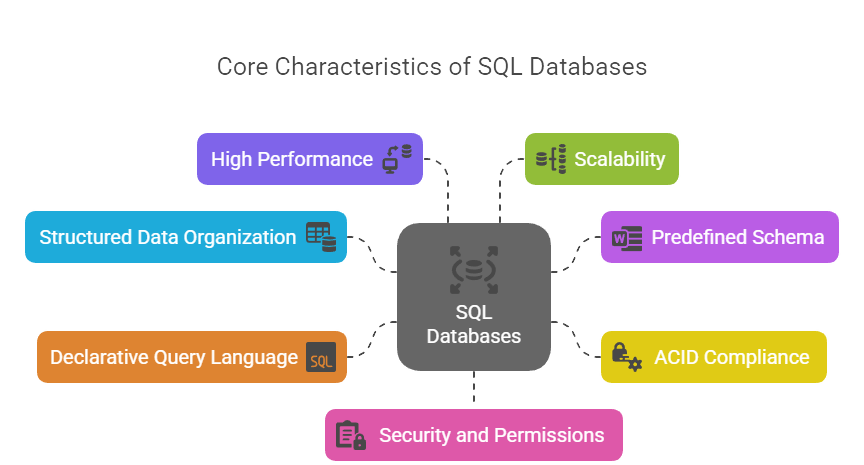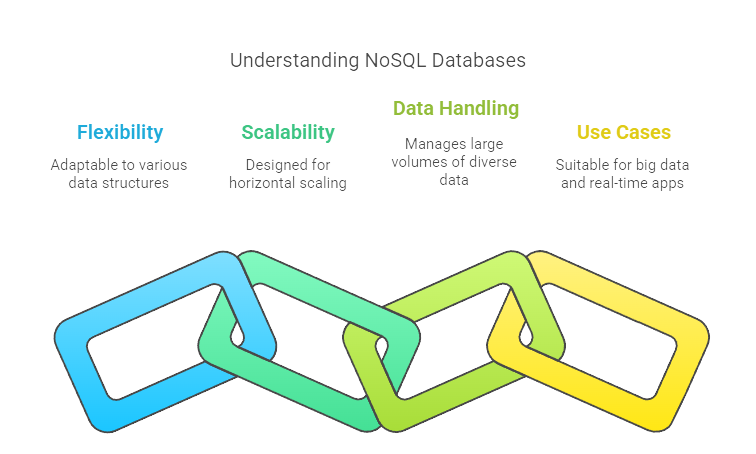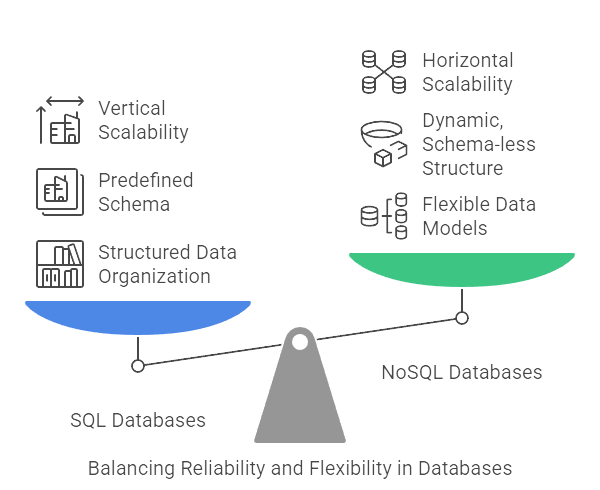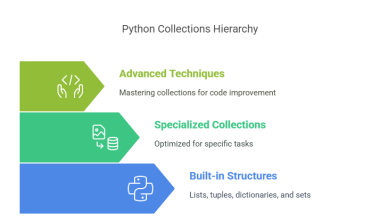Summary: This blog compares SQL vs NoSQL databases, highlighting their core differences in data structure, schema design, scalability, and transaction models. Understanding these distinctions helps developers and businesses select the best database technology for structured relational data or flexible, high-volume, and evolving data environments.
Introduction
Imagine you’re tasked with organizing a massive city library. You could use a classic Dewey Decimal System, where every book has a precise spot on a specific shelf, and every shelf is meticulously labeled. This system is strict, reliable, and makes finding a book straightforward-much like a SQL database.
Alternatively, you might use a flexible approach, grouping books by genre, author, or even popularity, allowing for rapid reorganization as the library grows and changes. This resembles a NoSQL database-adaptable, scalable, and ready for the unpredictable.
The SQL vs NoSQL debate is about choosing the right system for your data “library,” ensuring it meets your needs for structure, flexibility, scalability, and performance.
Key Takeaways
- SQL databases use structured tables; NoSQL supports flexible data models.
- SQL requires fixed schemas; NoSQL allows dynamic, evolving schemas.
- SQL scales vertically; NoSQL scales horizontally across multiple servers.
- SQL ensures ACID compliance; NoSQL often uses eventual consistency.
- Choose SQL for transactions; NoSQL excels with big data and flexibility.
What is SQL?

SQL stands for Structured Query Language. It’s both a language and a set of standards for managing relational databases-databases that store data in structured tables with rows and columns. SQL was developed in the 1970s and has since become the foundation for data storage in business, government, banking, and countless other sectors.
SQL databases use a schema-a blueprint that defines how data is organized, what types of data are stored, and how different tables relate to each other.
It is not just a language for querying data; it also allows for defining data structures (using DDL, or Data Definition Language), manipulating data (using DML, or Data Manipulation Language), and controlling access to data (using DCL, or Data Control Language). The power and maturity of SQL have made it the backbone of enterprise data management for decades.
Characteristics of SQL Database

SQL databases, also known as relational databases, are defined by several core characteristics that make them powerful and reliable tools for managing structured data:
Structured Data Organization
SQL databases store data in tables composed of rows and columns, with each column assigned a specific data type. This tabular format supports clear relationships and data integrity.
Predefined Schema
Before entering data, we must define the structure of the database-including tables, columns, and data types. This rigid schema enforces consistency and helps maintain data quality across the database.
ACID Compliance
SQL databases guarantee Atomicity, Consistency, Isolation, and Durability for transactions. This means that systems reliably process transactions, ensuring data integrity even in the event of errors, failures, or concurrent access. For example, a transaction will either complete fully or not at all, and we maintain all data rules and constraints throughout.
Declarative Query Language
It uses a standardized, English-like syntax for querying, updating, and managing data, making it accessible and easy to learn for users and developers.
High Performance
SQL databases are optimized for fast data retrieval and manipulation, handling large volumes of transactions and queries efficiently.
Scalability
It supports vertical scalability, allowing increased load by enhancing server resources like RAM, CPUs, or storage. This makes them suitable for applications where data growth is predictable and manageable.
Security and Permissions
SQL databases offer robust security features, including user authentication, authorization, and fine-grained permissions on tables, views, and procedures, ensuring that they protect sensitive data.
What is NoSQL?

NoSQL stands for “Not Only SQL.” It encompasses a broad range of database technologies that are not based on the traditional relational model. Developers created NoSQL databases in response to the limitations of SQL databases when dealing with modern data challengessuch as massive scale, unstructured or semi-structured data, and the need for rapid development cycles.
Developers design NoSQL databases to be flexible, horizontally scalable, and capable of handling large volumes of diverse data types. They find NoSQL databases particularly well-suited for big data, real-time web apps, IoT, and scenarios where data structures are constantly evolving.
Characteristics of NoSQL Database

Designers create NoSQL databases for flexibility and scalability, making them ideal for handling large volumes of unstructured or semi-structured data. They support dynamic schemas, horizontal scaling, high performance, and distributed computing, allowing organizations to adapt quickly to evolving data requirements and real-time application demands.
Flexible Data Models
NoSQL supports multiple data models:
- Key-Value Stores: Data is stored as key-value pairs (e.g., Redis).
- Document Stores: Data is stored as documents, often in JSON or BSON format (e.g., MongoDB).
- Column-Family Stores: Data is stored in columns rather than rows, optimized for large-scale analytics (e.g., Cassandra).
- Graph Databases: Data is stored as nodes and edges, ideal for representing relationships (e.g., Neo4j).
Dynamic, Schema-less Structure
NoSQL databases do not require a predefined schema. You can add new fields or change data structures on the fly, making them ideal for rapidly evolving applications.
Horizontal Scalability
Developers build NoSQL databases to scale out by adding more servers (nodes) to a cluster, distributing data and load across many machines.
High Availability and Fault Tolerance
Many NoSQL systems offer built-in replication, sharding, and automatic failover, ensuring continuous availability.
Eventual Consistency
Instead of strict ACID compliance, many NoSQL databases use the BASE model (Basically Available, Soft state, Eventually consistent), sacrificing immediate consistency for availability and partition tolerance.
Difference Between SQL vs NoSQL

The main differences between SQL and NoSQL databases center on data structure, schema flexibility, scalability, and use cases. SQL databases offer reliability and structure for well-defined data, while NoSQL databases provide flexibility and scalability for diverse, evolving data needs.
Data Structure
SQL databases are relational, storing data in structured tables with rows and columns. NoSQL databases are non-relational, using flexible models such as key-value, document, column-family, or graph formats.
Schema
SQL databases require a predefined, rigid schema, ensuring data consistency and integrity. NoSQL databases have dynamic schemas, allowing storage of unstructured or semi-structured data and easy adaptation to changing requirements.
Scalability
SQL databases typically scale vertically by upgrading server hardware, which can be limiting and costly. Developers design NoSQL databases for horizontal scalability, distributing data across multiple servers for better performance with large or rapidly growing datasets.
Query Language
SQL databases use the standardized Structured Query Language (SQL) for complex queries and transactions. NoSQL databases use various query languages or APIs, often tailored to their specific data models.
Transactions and Consistency
SQL databases are ACID-compliant, ensuring reliable transactions and strict consistency. Many NoSQL databases favour eventual consistency (BASE) for improved scalability and performance, though some offer configurable consistency levels.
Best Use Cases
SQL is ideal for structured data, complex queries, and applications needing transactional integrity (e.g., banking, ERP). NoSQL excels with unstructured or rapidly changing data, big data, real-time analytics, and large-scale web or IoT applications.
Conclusion
The SQL vs NoSQL debate focuses not on which is universally superior, but on which best suits your specific needs. SQL databases offer unmatched reliability, consistency, and support for complex queries, making them ideal for structured, transactional applications.
NoSQL databases provide flexibility, scalability, and performance for unstructured or rapidly changing data, excelling in big data and real-time analytics.
As technology evolves, the lines between SQL and NoSQL continue to blur, with many systems adopting features from both worlds. The best choice is the one that aligns with your data, scalability, and business requirements. Understanding the key differences empowers you to design robust, scalable, and future-proof data architectures.
Frequently Asked Questions
Which is More Scalable: SQL vs NoSQL?
NoSQL databases are generally more scalable due to their design for horizontal scaling. You can add more servers to a NoSQL cluster to handle increased data and traffic. While some modern SQL databases support horizontal scaling, traditional SQL databases primarily rely on vertical scaling, which can be costlier and less flexible at extreme scales.
Are SQL Databases Better Than NoSQL Databases?
Neither is inherently better; it depends on your use case. SQL databases are ideal for structured data, complex queries, and transactional integrity. NoSQL databases are better for unstructured or semi-structured data, flexible schemas, and applications requiring high scalability and availability. The best choice depends on your specific requirements.
Can SQL And NoSQL Databases Be Used Together?
Yes, using both SQL and NoSQL databases in the same application is common. This hybrid approach allows you to leverage the strengths of both: SQL for transactional data and consistency, NoSQL for scalability and flexibility. Many modern architectures, such as microservices, employ multiple databases to optimize performance and reliability.




